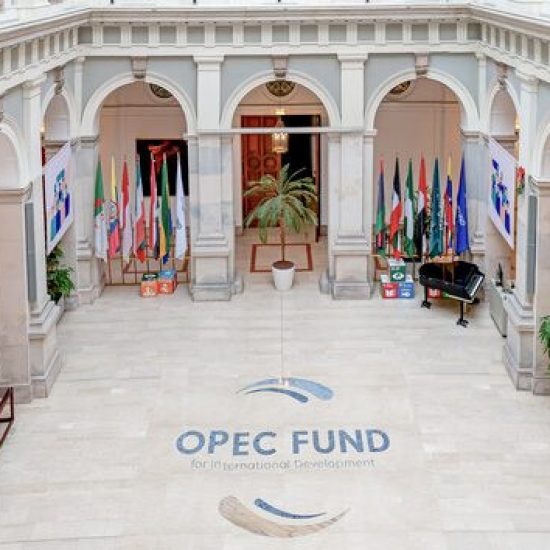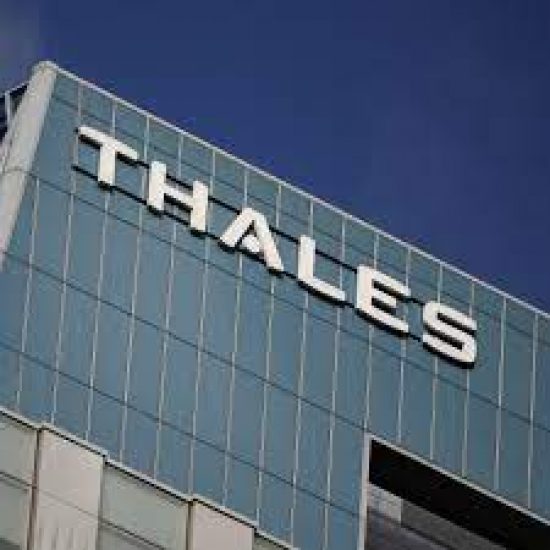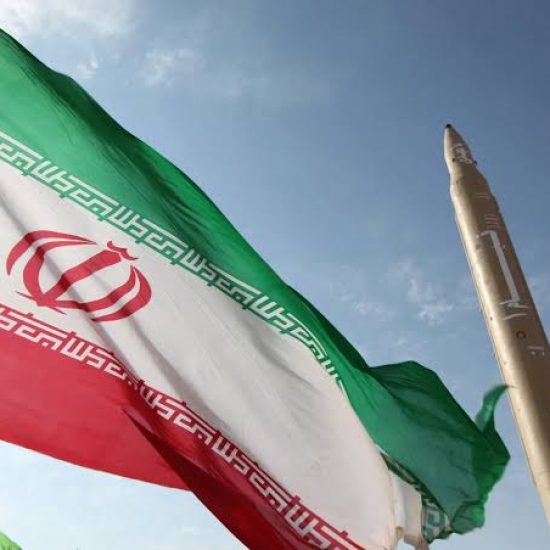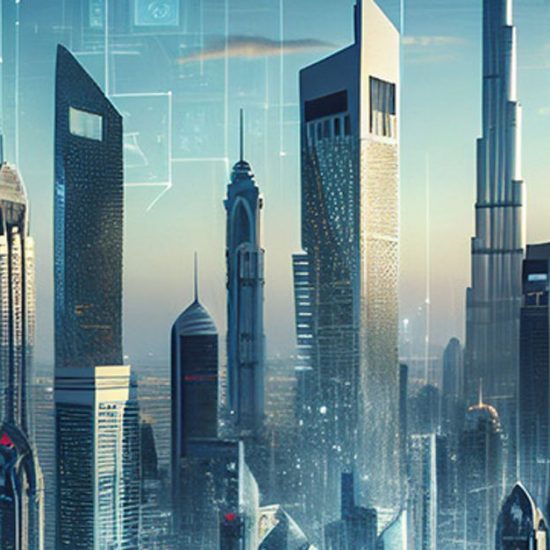 Alongside the Dubai Mall, one of the world’s largest shopping centers, sits an ersatz version of what would be an authentic retail experience in most Persian Gulf cities: an Arab souk.
Alongside the Dubai Mall, one of the world’s largest shopping centers, sits an ersatz version of what would be an authentic retail experience in most Persian Gulf cities: an Arab souk.
If, in the evening, you stroll through this air-conditioned, hassle- and haggle-free caricature of a market, staffed mostly by smiling South Asians, you can amble out onto the shores of man-made Burj Khalifa Lake, named after the world’s tallest building, which looms over it.
Here — bumping elbows with a veritable United Nations General Assembly of residents and tourists decked out in everything from dishdashas to Dior — you can gawk at the Dubai Fountain, Bloomberg Markets magazine will report in its December issue. Every half-hour, an array of computer-choreographed nozzles sends jets of water erupting from the lake’s surface 500 feet into the air, gyrating to Middle Eastern pop one minute and Andrea Bocelli singing “Con Te Partiro” the next.
Awash in fantasia, this metropolis of glass and steel sprouting from the barren sands of the Arabian Peninsula often seems nothing more than an illusion born of desert heat.
Never was Dubai more miragelike than five years ago, after the global financial crisis crushed what had been a bastion of wealth and growth. House prices plunged as much as 60 percent. Half of the city’s $582 billion in construction projects were either placed on hold or abandoned, their incomplete steel skeletons left poking from the sand, a 21st-century Ozymandias.
Now, Dubai is booming again.
To understand why, journey 20 miles (32 kilometers) from the Dubai Mall to a part of the city few tourists ever see.
Here, if you pass through the security gates at Jebel Ali port, you’re treated to another mesmerizing mechanical ballet — one less ephemeral and arguably more important to the city-state’s fate than the Dubai Fountain’s dancing waters.
Towering gantry cranes sidle up to 1,200-foot-long (365-meter-long) container ships bound for Mumbai or Singapore or Rotterdam. They delicately pluck containers from the tarmac, hoist them into the air in a single, fluid motion and stack them like children’s blocks onto ship decks.
The port is a crucial pillar in the efforts of Dubai’s ruler, Sheikh Mohammed bin Rashid Al Maktoum, to ensure that this time around, growth rests on a more stable footing: moving away from real estate and leaning instead on trade and shipping as well as finance and tourism.
Dubai, one of seven principalities that make up the United Arab Emirates, has only minimal oil reserves. Instead, the city-state has positioned itself as the hinge connecting Asia to the rest of the world, the gateway city for the fast-growing frontier markets of Africa and a safe haven for investors shunning an arc of conflict that stretches from Libya to Afghanistan.
Still, with real estate prices reaching new highs amid plans for more office towers, more luxury resorts and more gargantuan shopping malls, the question remains: Can Dubai escape the excesses that nearly sank it before?
Mohammed Al Shaibani thinks it can. Sheikh Mohammed enlisted Al Shaibani to help restructure as much as 110 billion pounds ($177 billion) in debt Dubai was left holding in 2009. Al Shaibani, 50, is chief executive officer of Investment Corp. of Dubai, which oversees the government’s commercial assets; he’s also director general of the Ruler’s Court, which functions as the emir’s advisory council.
His first task was to persuade creditors to give Dubai enough time to figure out exactly how much it owed. Lenders were suspicious that Dubai was trying to cover up the extent of its financial woes. There was no duplicity on Dubai’s part, Al Shaibani says; the city simply couldn’t keep up with its own growth.
“Some banks were concerned we weren’t sharing information,” he says. “In reality, we didn’t have the information to share.”
After a $10 billion cash injection from its Emirati next-door neighbor, oil-rich Abu Dhabi, and a year of tense negotiations with creditors, Dubai World Corp., the holding company that manages much of the Dubai government’s investment portfolio, agreed to restructure $23.5 billion in liabilities in November 2010.
Dubai’s rebound since then has been dramatic. As of late October, the benchmark Dubai Financial Market General Index (DFMGI) was three times higher than its 2009 low, making it among the 10-best-performing stock markets in the world during that time period, according to data compiled by Bloomberg.
Gross domestic product expanded 4.6 percent in 2013, and the government expects it to top 5 percent this year. Although this rate is half what it was before the financial crisis, Marios Maratheftis, global head of macro research at Standard Chartered Plc in Dubai, says the current pace is sustainable.
“We would much prefer 4 to 5 percent than to see 8 percent,” he says.
Before the financial crisis, credit-fueled real estate speculation was the major driver of Dubai’s economic growth. Today, Maratheftis says, it’s hospitality, retail and logistics.
Dubai has profited from its neighbors’ misfortunes.
“The Libyans, the Syrians, the Egyptians, the Iranians: They’re all here,” says Patrick Lord, Dubai-based Middle East managing director at Control Risks Group Holdings Ltd., a political- and business-risk consulting firm. “It’s become the place to come — if not physically, then for their money to come.”
Even so, the U.A.E.’s participation in U.S.-led air attacks on Islamic State strongholds in Syria and Iraq may jeopardize Dubai’s haven status.
Christopher Davidson, a researcher at Durham University in the U.K. who specializes in the Gulf states, says of the U.A.E., “They are no longer influential neutrals and are instead becoming a frontline state in a war that could engulf the whole region.” He says, however, that Dubai’s economic model is not in immediate danger.
Setting its sights to the west, Dubai is now looking to profit from Africa’s successes. Once-moribund economies from Ghana to Angola to Kenya have grown at 5 percent or more a year since 2009, and a rising number of European, U.S. and Asian businesses are putting their African headquarters in Dubai.
“You can’t run Africa out of London or French Africa out of Paris anymore, like it used to be in the old days,” says Fadi Ghandour, the co-founder and vice chairman of Aramex PJSC (ARMX), a Dubai-based transportation and logistics company with close to $1 billion in annual revenue that has recently begun expanding into Africa. “Today, there’s a competitor, and it is here in Dubai.”
The Jebel Ali port is one reason. Dubai’s air connections are another. State-owned airline Emirates, which started out with two Boeing 727s in 1985, now flies to 140 destinations around the globe, including 24 African cities.
In the first three months of 2014, Dubai International Airport surpassed London’s Heathrow, handling more than 18 million travelers, compared with Heathrow’s 16 million.
An airport currently under construction, the $80 billion Dubai World Central-Al Maktoum International Airport, will have five runways and capacity for 160 million passengers annually when it’s completed sometime between 2020 and 2030.
Ghandour says Dubai is the Middle East’s only “plug and play” city. Born in Beirut, Ghandour grew up in Jordan and now splits his time between Amman and Dubai, which he began visiting regularly in the early 1980s.
He says Dubai has been a superb base not just for Aramex — which became the first Arab company to go public on the Nasdaq Stock Market, in 1997 — but also for Ghandour’s current passion as an angel investor in tech startups throughout the Middle East.
He says the city offers international companies easy incorporation, freedom from taxation, a business-friendly visa regime and infrastructure that works.
Dubai’s lifestyle attracts expatriates: beaches, golf clubs, international schools, low crime and modern housing, plus an ample supply of inexpensive nannies, drivers, cooks and cleaners. Those from countries with residency-based income tax, such as the U.K., can live virtually tax-free.
The expat paradise has a dark side, though. Some female visitors who reported sexual assaults to police have wound up being charged — and, in some cases, convicted — under laws banning nonmarital sex.
The ubiquitous posters and billboards depicting the ghutra-framed visage of Sheikh Mohammed lend the city an Orwellian undercurrent. So does the vast panopticon of surveillance cameras; civil rights and privacy advocates say the cameras, ostensibly for public safety, are used to track and intimidate political dissidents and labor rights advocates.
In an October report, Human Rights Watch criticized Dubai for not doing enough to reform a system that enabled “forced labor” among immigrants, particularly female domestic workers. Immigrants, many from the Indian subcontinent, Africa and the Philippines, make up 90 percent of the U.A.E.’s 9.3 million residents. Visa restrictions tie migrants to their employers.
In response to the report, Amna Al Muhairy, director of the human rights department of the U.A.E. Foreign Ministry, said the report drew “sweeping conclusions based on a small, unrepresentative sample.” She also said that the U.A.E. “is committed to the continuous strengthening of protections for foreign workers, including migrant domestic workers, as a national priority.”
Over the years, Dubai has acquired a reputation for money laundering that it’s struggled to shake. The funds that paid for the Sept. 11, 2001, attacks in New York and Washington were routed through Dubai banks, according to the 2004 report of the National Commission on Terrorist Attacks Upon the United States.
In 2009, Hazrat Omar Zakhilwal, Afghanistan’s finance minister, told a conference of U.S. customs officials that a joint U.S.-Afghan study had found that every day $10 million in cash, much of it from Afghanistan’s heroin trade, was smuggled in briefcases from Kabul to Dubai.
In August, when the New York State Department of Financial Services reached a settlement with Standard Chartered for sanctions violations, it required the bank to sell or close the accounts of its small-business clients in Dubai.
That drew a sharp rebuke from the U.A.E.’s central bank, which said Standard Chartered had committed “no significant violations.”
In April, the central bank drew up new penalties, including possible imprisonment, for such offenses as money laundering and failing to report suspicious financial activity.
“We are so strict about these things,” Al Shaibani says.
For Dubai, geography is destiny.
It sits within easy reach of three regions — the Gulf, the Indian subcontinent and Africa — each with a $2 trillion-a-year economy, Jeffrey Singer, the American former CEO of the Dubai International Financial Centre Authority, said in a May interview. (In August, Singer resigned from the authority, citing personal reasons; his replacement had not been named as of late October.)
Since 2004, the DIFC Authority has managed a special administrative zone that now boasts more than 1,100 businesses, including regional offices of many of the world’s largest banks, law firms, insurance companies and asset managers. The special zone offers a judicial framework that appeals to businesses, Singer said.
“We have established a legal and regulatory structure that allows international firms to do business safely and securely,” Singer said in his office atop the Gate, a building modeled on the Grande Arche de la Defense in Paris.
The DIFC has its own laws and common-law courts, run by international judges, where DIFC-based companies can bring commercial disputes arising anywhere in the world.
In its quest to become a leading global crossroad, Dubai has to clear a few obstacles.
The government says it aims to double the number of visitors to 20 million by the time it hosts World Expo 2020, an international trade and tourism extravaganza. It will spend almost $9 billion building exhibition halls and additional infrastructure, including hotels, new metro rail links and yet more shopping malls.
Fitch Ratings cautioned in a November 2013 report that the scale of construction “creates a significant risk that there will not be enough demand to support the new hotels, offices and retail space.”
Swatting away concerns, Standard Chartered’s Maratheftis says real estate constitutes only 8 percent of Dubai’s GDP now, compared with 14 percent before the crisis.
“There’s much less speculation this time,” he says, noting that the percentage of vacant properties in the market has come down to less than 15 percent from more than 20 percent in 2010.
Dubai faces increased competition from a crop of imitators.
Last year, Oman opened a deep-water port at Duqm that will try to draw business away from Jebel Ali. Istanbul is marketing itself as an alternative logistics and financial hub, with Turkish Airlines now flying to more worldwide destinations than any other carrier. Qatar Airways Ltd. is also challenging Emirates for business travelers, while Doha is promoting itself as a financial center.
Al Shaibani says none of this worries him.
“It is not just about physical infrastructure,” he says.
Much of Dubai’s success, he says, is due to what he calls “software” — people and systems that, for example, ensure a ship at port can be turned around quickly or a legal dispute resolved fast and fairly. In this regard, Al Shaibani says, Dubai has a decades-long head start.
So far, Dubai’s “if you build it, they will come” strategy seems to be working. The city is packed with tourists. More people visit the Dubai Mall each year than Niagara Falls, the Eiffel Tower and Disney World combined. The airport boasts the largest terminal in the world. At Jebel Ali, the cranes pirouette round-the-clock, and at the Dubai Fountain, the music plays on and on and on.-Bloomberg



![blackrock 1[1]](https://thearabianpost.com/wp-content/uploads/2025/07/blackrock-11-550x550.jpg)



